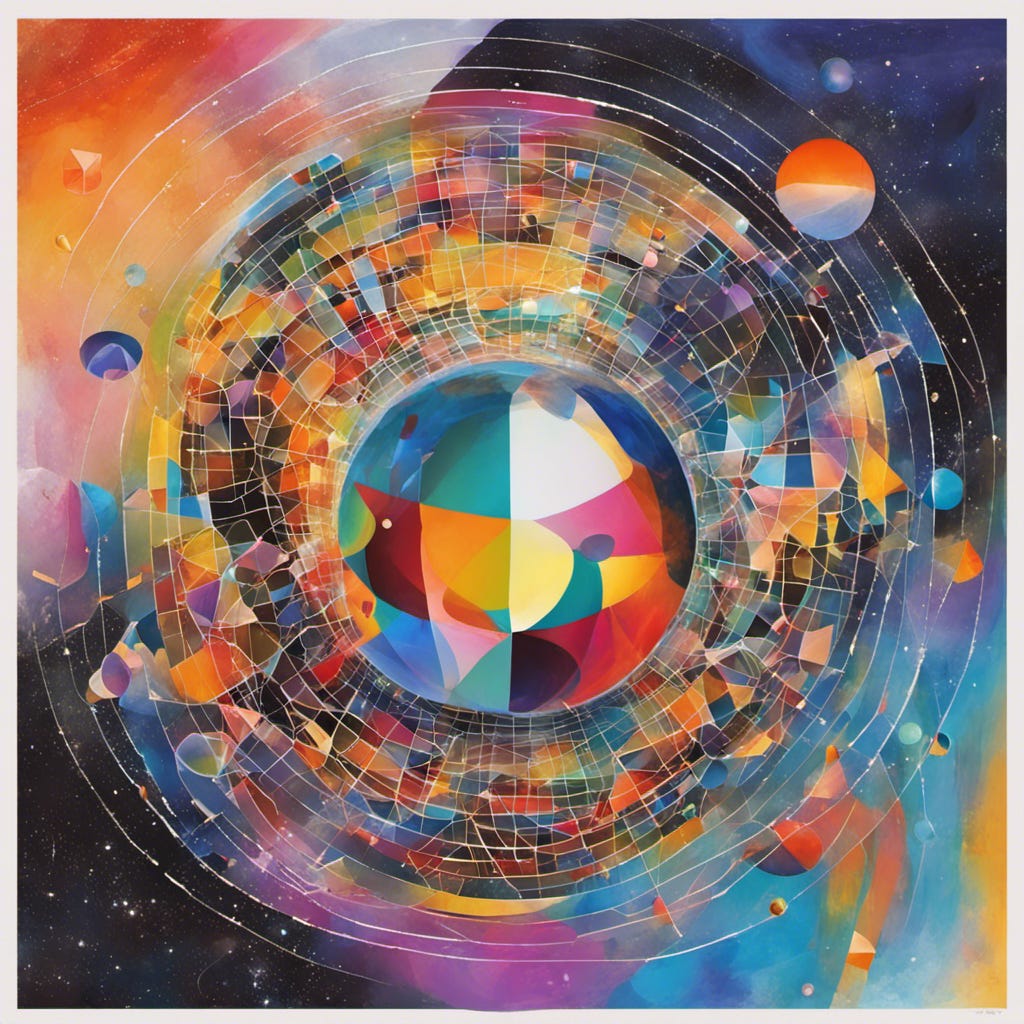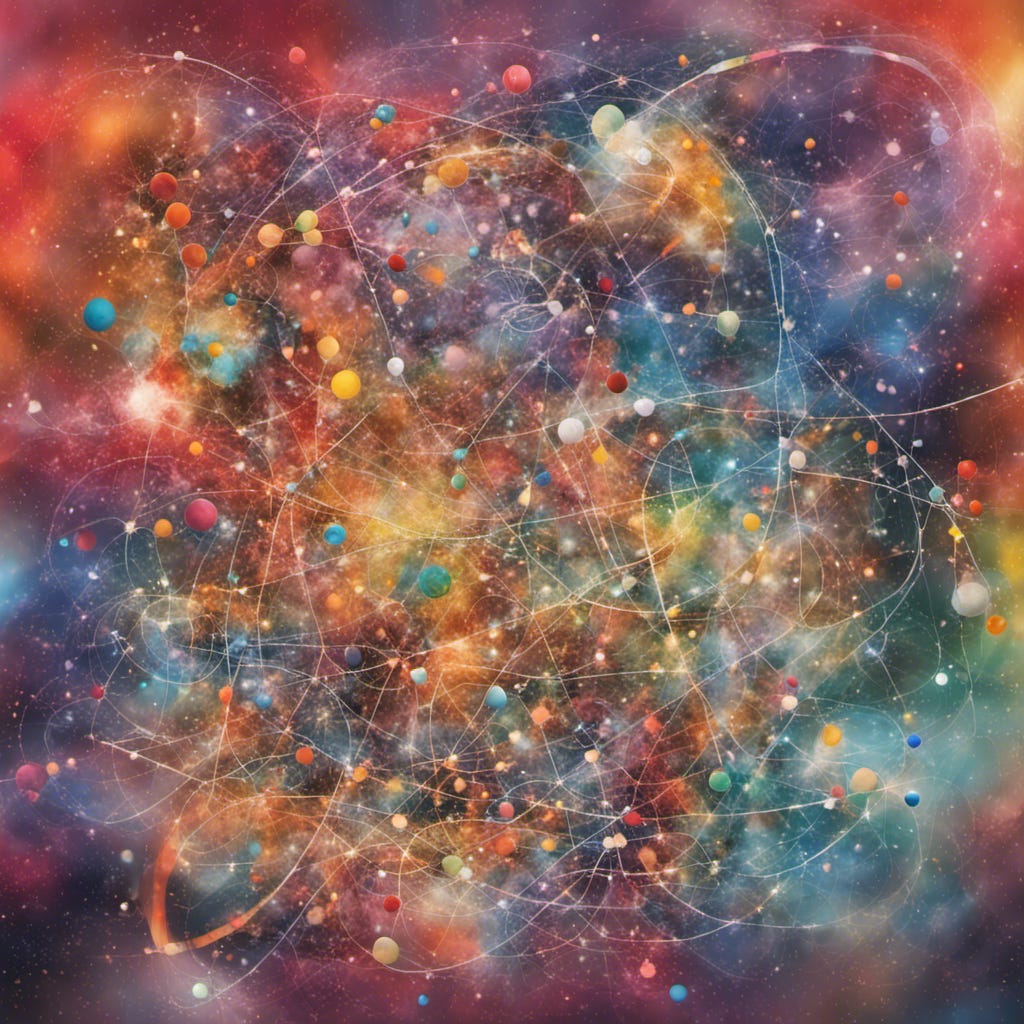What does it mean to know a thing?
Knowledge comes in many forms.
Inherited: The kind that is encoded in our DNA. Compressed, evolved knowledge from eons of mistakes and corrections. Specific mutations that make us who we are.
Absorbed: As we grow, our minds suckle on the delicious grapes of knowledge available in abundance from the environment and our tight circles.
Shared: We learn from the social structures we belong in. From our communities, from our networks, from our kin.
Sensed: Knowledge we accumulate through our experiences, our work, our creations, our connections with nature.
Sought: Active knowledge we seek to possess, cultivate and curate. From schools, text books, or blogs.
Imposed: Knowledge as an attack vector. Precisely manufactured viruses that invade our brain space and computing power.
Clearly, not all knowledge is good. Effective learning must employ a strong filter to remove the tainted bits and retain the healthy nuggets.
What form of knowledge does ChatGPT contain?
The simplest answer to the question is that it is an average of all the 6 forms of knowledge. It is reasonable to arrive at this conclusion given that language models are trained on the vast corpus of human knowledge accumulated on the internet, over time.
But if we are pedantic about it, it is only shared knowledge because we know that LLMs learnt from their environment, the internet. If we are willing to indulge further, it is inherited knowledge. We can think of LLMs as children of all internet humans and the model behind it is the compressed, encoded knowledge (DNA).
What form of knowledge does it produce?
When you ask ChatGPT a question, it has to do some work to produce the next token. And more work for the next and so on. According to our categorization above, this is sensed knowledge.
Unlike humans, the senses employed by LLMs are simulated. Hallucinations happen when those simulations are powered by incomplete versions of reality.
If and when LLMs are equipped with the ability to absorb and seek knowledge more actively in real-time, we will have an intelligent, inorganic being that is more durable than organic ones.
Mining Knowledge
Humans have always mined knowledge:
From the universe (absorbed), through inquiry into physical sciences.
From our encoded (inherited) knowledge through philosophy.
From our rich history (sought) through archeology.
Hallucinated in our own simulations (sensed) through legends, tall tales.
These acts of mining, however, have been extraordinarily arduous. Dedicated, mission-driven geniuses have been digging deeper into tunnels from the past, opened by impassioned men and women just like them.
Efficient mining
With LLMs doing similar work without having to tend to decaying organic matter, we have more efficient mines. Very soon we will compress time through this progress in knowledge-mining technologies. What used to take multiple generations to discover may take mere months.
Pairing of impassioned individuals with efficient knowledge mining machines will lead us into an accelerated mode of existence. This will take us beyond the imaginations of the most brilliant science fiction authors of our times.
Learning is mining
Find available sources of knowledge, choose the right ones and dig. Refine the acquired knowledge by removing contaminants. Assimilate it and other forms of knowledge through systemic inquiry. Assert control over it by producing work.
Effective Mining
Humans are natural-born augmenters.
See a problem. Make a tool. Solve the problem.
Building tools is as natural to us as using the digits on our limbs. By selecting us to build our own adaptations, nature acknowledges human intelligence as a worthy collaborator in evolution.
When you strategically pair a human, thirsting for knowledge, with a machine that is ruthlessly efficient at mining, you have a symbiotic relationship that accelerates learning potential beyond imagination.
Enter SocratiQ
SocratiQ is built to manifest this symbiotic partnership in learning. SocratiQ is a machine designed as a two way miner. It mines learners on their behalf to surface their learning. Sometimes unearthing, sometimes manifesting, sometimes guiding.
It mines its own self, armed with an awareness of where the learner is, creating accessible chunks of knowledge that can be instantly assessed, consumed and assimilated by the learner.
It is incredibly exciting to be at this inflection point we have all been waiting for. This technology makes learning truly personalized, endearingly conversational, naturally exploratory and eventually equitable.
If you haven’t tried SocratiQ yet, this is a good time to give it a whirl and come back to this article.
Responsible Learning
The technology is nascent. Its potential, unquestionable. What is also unquestionable is the lasting impact a teacher has in a student. By empowering them to absorb any knowledge they desire. By creating an environment where shared knowledge is consumed with ease.
SocratiQ challenges the notion that technology-driven learning and human connections are incompatible. Conversations, care and connection are a key part of a classroom experience. SocratiQ is designed to retain and enhance such experiences while ushering in new forms of learning.
Omnipresent Teachers
In a SocratiQ classroom, teachers create an exploration. They add rich text notes with their commentary, guidelines and resources for the students to get started. Have a look at our first featured exploration to see this in action.
Newton's Laws of Motion
You can “View” to see the opener / intro. If you login and “Explore”, you get to see the whole thing.
With SocratiQ, teachers get to pave roads for students to explore. Students share their exploration with teachers. Teachers view student progress, review work and add notes for feedback and further guidance. This also gives them an opportunity to bring important discussions to their physical classroom. How great is that!
We are adding more ergonomics and features to make it easier for teachers.
Interactive Learning
In a classroom, you get to absorb knowledge when someone asks a question. It is serendipitous learning. If they didn’t ask, you might never know.
Collaborative explorations in SocratiQ make this form of learning available in and outside the classroom. Every inquiry can have multiple responses, even from the same person. You get to see the feedback provided from multiple perspectives. Imagine how powerful that is.
Learn with you, without you
SocratiQ’s Teach the World project makes all this goodness available to everyone at no extra cost. You learn or teach with SocratiQ as usual. All you have to do is press a button to publish your exploration so the world can learn.
SocratiQ’s GitHub-like “Fork” action allows anyone to learn from and continue your exploration. Imagine this. Your favorite scientist has explored and published. Years later you come along and continue their learning. You are learning with them, a version from 10 years back. Isn’t that fascinating?
SocratiQ: Sieve of Knowledge
Like the sieve of Eratosthenes that surfaces prime numbers, SocratiQ helps you mine all forms of knowledge with capable facilitators, collaborative environment and an infinite workspace.
We are beginning our first set of pilots shortly. If you are a teacher or school administrator interested in piloting SocratiQ, reach out to us: founders@koodup.com.













